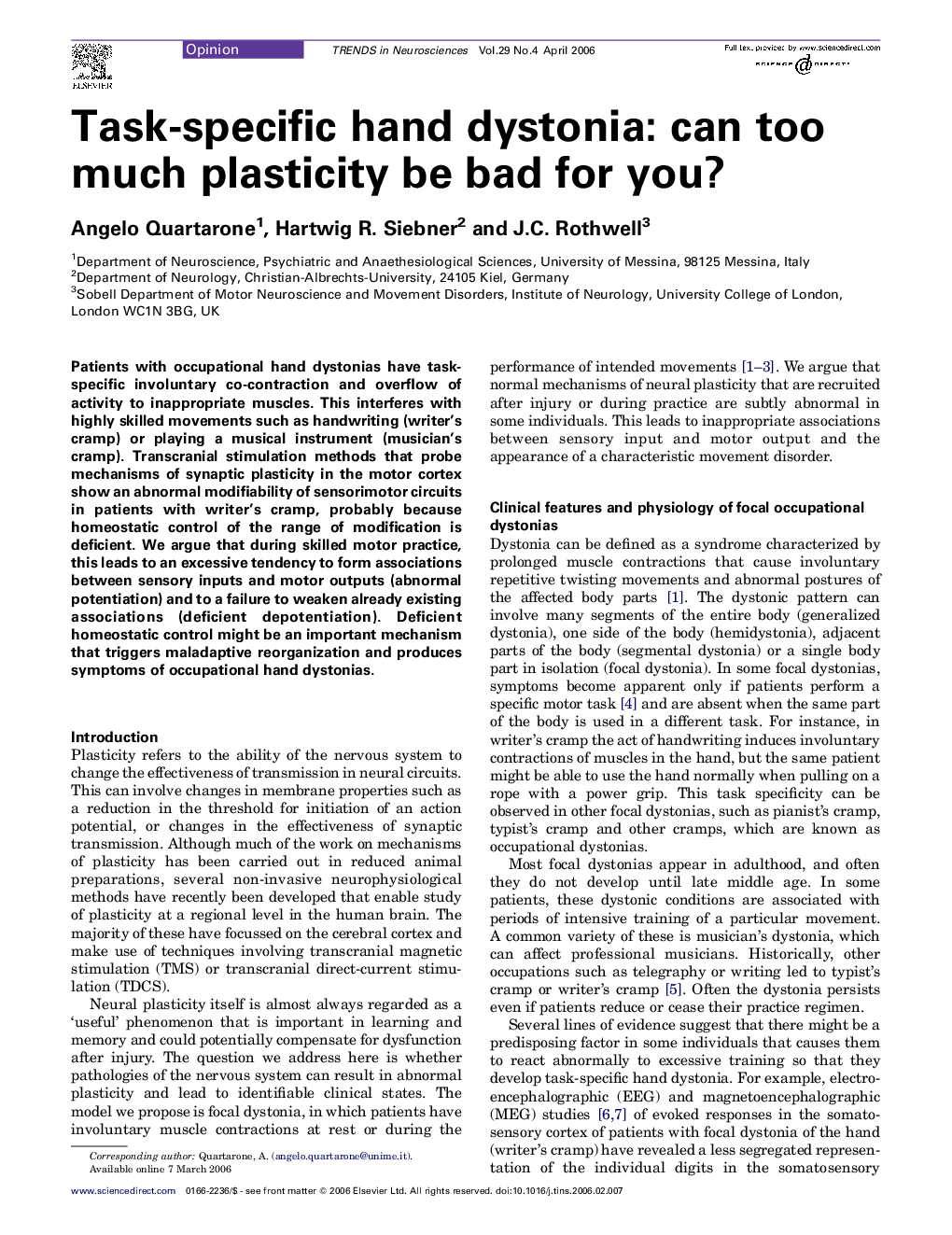| Article ID | Journal | Published Year | Pages | File Type |
|---|---|---|---|---|
| 4354907 | Trends in Neurosciences | 2006 | 8 Pages |
Patients with occupational hand dystonias have task-specific involuntary co-contraction and overflow of activity to inappropriate muscles. This interferes with highly skilled movements such as handwriting (writer's cramp) or playing a musical instrument (musician's cramp). Transcranial stimulation methods that probe mechanisms of synaptic plasticity in the motor cortex show an abnormal modifiability of sensorimotor circuits in patients with writer's cramp, probably because homeostatic control of the range of modification is deficient. We argue that during skilled motor practice, this leads to an excessive tendency to form associations between sensory inputs and motor outputs (abnormal potentiation) and to a failure to weaken already existing associations (deficient depotentiation). Deficient homeostatic control might be an important mechanism that triggers maladaptive reorganization and produces symptoms of occupational hand dystonias.
